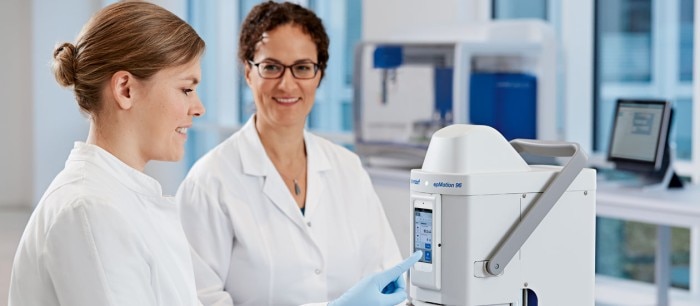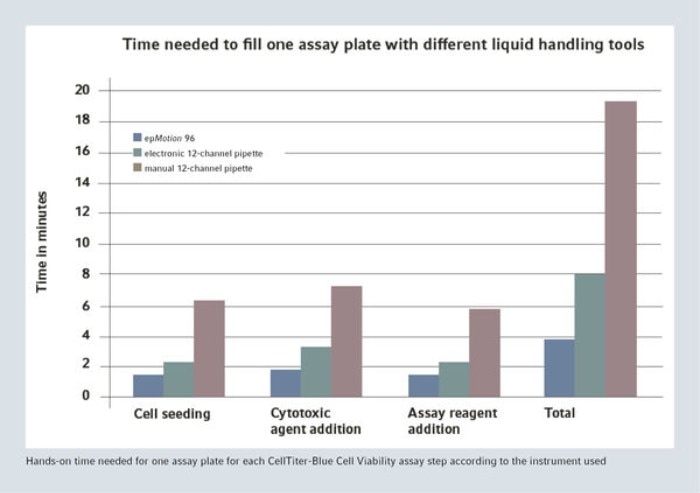MENU
SK | EUR
Logged in as:
SK | EUR
No results found
Search Suggestions

96-Wells at Once – Faster and More Reproducible Cell Assays
Lab Academy
- Liquid Handling Workstations
- Efficiency
- Reproducibility
- Automation
- Essay
Cell Based Assays are an established standard tool in life science and performed in 96 and 384-well plates. They require multichannel pipetting to ensure quick, efficient, and reproducible handling – especially when multiple plates need to be processed. A manual 12-channel pipette, an electronic 12-channel pipette and a semi-automated 96-channel electronic pipette (epMotion 96) were compared for cell seeding, cytotoxic agent and assay reagent addition.
Cell viability was evaluated after treatment with a staurosporine dose-response curve. Profiles generated were comparable for each instrument used for cell seeding and reagent adding. Nevertheless, with a manual pipetting system, the assay reproducibility was affected as indicated by higher standard deviations.
Read more
Read less

S/B and Z´factor calculated for CellTubes - Blue Cell Viability Assay according to the instrument used for cell seeding and reagent adding

Intra- and inter-plate CVs calculated for CellTubes- Blue Cell Visability Assay for the respective instruments used
With all assay performance parameters studied (signal-to-background ratio, Z’-factor, intra-plate and inter-plate CV), it was demonstrated that the assay robustness and reproducibility were significantly better when an electronic pipette (epMotion 96 or electronic pipette) was used.
Read more
Read less

Among all instruments tested, the epMotion 96 appears as the fastest option since a complete cell-based assay requires only 4 minutes, that means 5 times less hands-on time than what is needed with the manual pipette.
- to read the whole Application Note.
- to read the whole Application Note.
Read more
Read less
